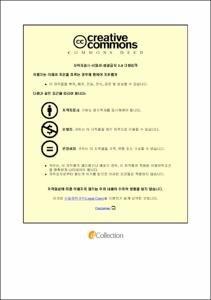기업의 R&D 활동 유형이 혁신성과에 미치는 영향
- Abstract
- With the acceleration of digital transformation and innovation, change in production paradigm, and the shortening of product life cycle, uncertainty is widespread in the era of the Fourth Industrial Revolution of technological innovation. Uncertainty in the global economy is even greater due to the long-lasting COVID-19 crisis, which has been around for more than two years, and the recent outbreak of the Russia-Ukraine war. Accordingly, companies are seeking innovative performance-based transformation and development to enhance competitiveness. Businesses in a range of industries are conducting R&D. The manufacturing industry, in particular, has a direct impact on the overall industrial development in Korea as R&D in manufacturing accounts for the majority of the industrial R&D expenditures in the country. Therefore, this study aims to provide directions for suitable R&D activity strategy for each manufacturing business type and to investigate the effect of each R&D activity type on innovation performance for efficient R&D investment.
To achieve the research objectives, relevant previous studies were reviewed to establish research models and hypotheses, and data on the manufacturing sector from the 2020 Korean Innovation Survey was utilized for an empirical analysis. Although the data included 4000 samples, a total of 932 samples were used for the analysis, excluding those missing variables necessary for this study.
Among the major variables, innovation performance was measured based on the contribution of the first products in the market and of the company to sales, and the contribution of existing non-innovative products to sales was also used for statistical analysis. As for R&D activity types, the ratio of R&D expenses by research subject, such as internal independent/internal collaborative/external R&D, was selected as a variable, and the ratio of R&D personnel was selected as a variable for the index of human resources. In addition, R&D concentration was also determined as a variable for R&D activities. In terms of business characteristics, the business size (whether it is categorized as an SME), the number of regular employees, whether the business is listed, business history, and business location were selected as variables.
The IBM SPSS 28.0 program was used for a statistical analysis, and a multiple linear regression analysis was performed to investigate the effect of R&D innovation activity types on innovation performance of manufacturing companies.
The results of the analysis are as follows: first, the contribution to the company's initial sales was higher when the proportion of internal independent R&D was smaller, when the proportion of external R&D was smaller, when R&D concentration was lower, and when it was an SME. Second, the smaller the proportion of internal independent R&D, the smaller the proportion of external R&D, the lower the R&D concentration, and with SMEs, the higher the contribution to the company's initial sales. Third, it was found that the contribution to sales of existing products was higher when the proportion of internal independent R&D was greater, when the proportion of external R&D was greater, when the ratio of R&D personnel was lower, and when it was not an SME.
The results of this study imply that there is a significant need for a specific methodology for the establishment of corporate innovation strategies as well as the expansion of professional R&D manpower as part of the government's effort to support manufacturing companies. Since the innovation performance of manufacturing companies serves as a driving force for national competitiveness, the government should lay the groundwork and provide support to maximize the innovation performance of manufacturing companies for improved national competitiveness.
- Issued Date
- 2022
- Awarded Date
- 2022. 8
- Type
- Dissertation
- Publisher
- 부경대학교
- Affiliation
- 부경대학교 기술경영전문대학원
- Department
- 기술경영전문대학원 기술경영학과
- Advisor
- 천동필
- Table Of Contents
- Ⅰ. 서 론 1
Ⅱ. 선행연구 5
1. R&D 활동 5
2. 제조기업의 혁신성과 14
3. 기업R&D와 성과실증연구 19
4. 가설설정 27
Ⅲ. 연구방법론 29
1. 연구대상 및 자료수집방법 29
2. 변수의 구성 33
3. 통계분석방법 34
Ⅳ. 분석결과 35
1. 기초통계분석 35
2. 주요변수 간 상관관계 37
3. R&D 활동 유형이 상품유형별 매출기여에 미치는 영향 39
Ⅴ. 결론 45
참고문헌 49
부 록 : 설문지 56
감사의 글 70
- Degree
- Master
- Files in This Item:
-
-
Download
 기업의 R&D 활동 유형이 혁신성과에 미치는 영향.pdf
기타 데이터 / 3.28 MB / Adobe PDF
기업의 R&D 활동 유형이 혁신성과에 미치는 영향.pdf
기타 데이터 / 3.28 MB / Adobe PDF
-
Items in Repository are protected by copyright, with all rights reserved, unless otherwise indicated.